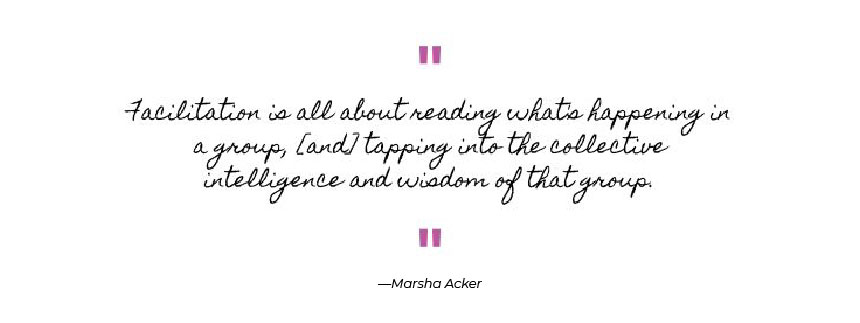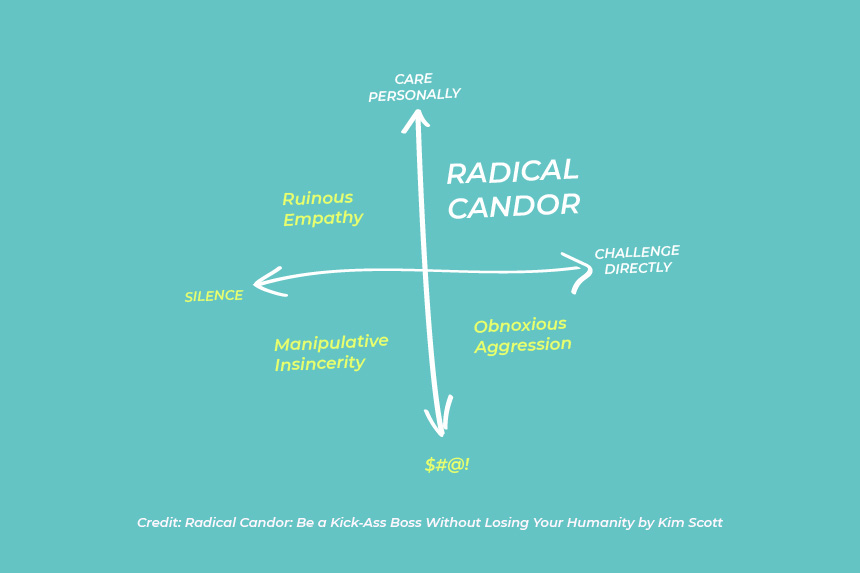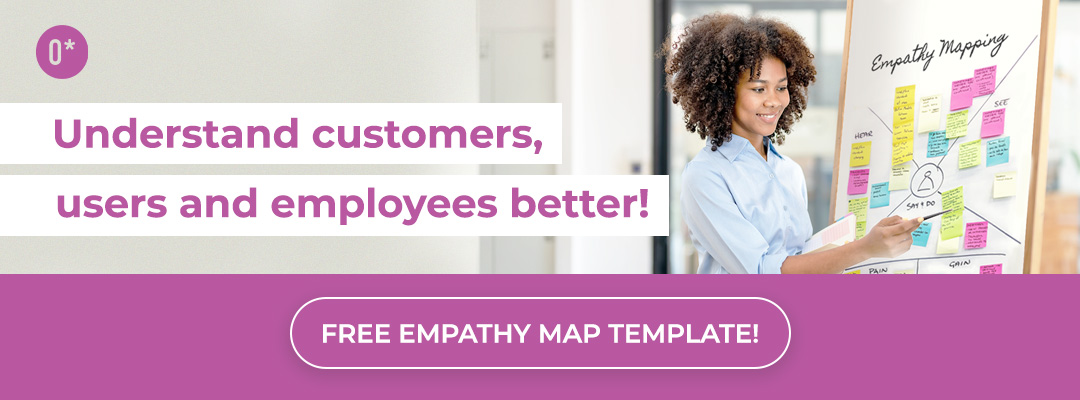Author: Amy Sullivan
If you’ve been exposed to the Agile project management methodology in your UX or service design work, then you know that sprints are an essential part of an Agile project’s iterative process. (And if you’re less familiar with Agile, we recommend reading our post about Agile and how it can integrate with human-centered design!)
You may also know that cross-functional communication is a key Agile principle, and that managers often book too many meetings in their eagerness to follow this principle… But, if you’re going to plead with them to trim down your meeting time, make sure that you keep sprint retrospectives on the books. They’re must-haves for Agile projects!
In Part 1 of our series on sprint retrospectives, we explained that these meetings are very different from post-mortems: Since they occur mid-project, they provide a chance to escape the tunnel vision that sometimes plagues design and product teams on tight deadlines. And because they typically include only the project team, sprint retrospectives give teammates a space to candidly reassess how things are going. That candidness allows people to focus on opportunities for improving efficiency, cooperation, workflows and overall impact while there’s still time to pivot.
That being said, sprint retrospectives are only productive if everyone feels comfortable sharing their thoughts and if the facilitator has embraced an open-minded approach to problem-solving.
That’s where today’s blog comes in! We’ll be breaking down esteemed leadership coach Marsha Acker’s 6 key strategies for facilitating Agile discussions, and sharing added insights from the Outwitly team’s combined UX and service design experience.
At the bottom of this blog, we’ve also included a list of resources for developing your facilitation skills so that anyone who wants to facilitate a retrospective can access more strategies and perspectives on what it means to lead these crucial meetings.
Why Should UX and Service Designers Learn Facilitation?
Even if you’re not a project manager or product manager (maybe you’re a designer, a researcher, a strategist, etc.), meeting facilitation is still an essential skill to develop.
To advance into senior roles or be brought onto higher-profile projects, you’ll need to show stakeholders that you can confidently guide teams through challenges and initiate important conversations. And if landing a lead position is not in your plans, there will still be times when you’ll need to step in and direct a discussion.
View this post on Instagram
For example, a practitioner working on a government design project with a team that ranks low on the UX maturity scale may find that their manager is unfamiliar with UX design and testing processes. They might not know what probing questions to ask the team in order to tease out problems; or they might not be invested in the process because they doubt its effectiveness.
With more UX-mature teams, you might find that your established facilitator is too invested in a specific project outcome, and can’t set aside their bias in favour of long-term success (keep reading for more on this!). Or maybe that person catches laryngitis and has to bail last minute.
You get the gist: If you want to hold sprint retrospectives, you should be ready to facilitate them. And an Agile mindset will help you to do a stellar job.
6 Key Strategies for Successful Agile Facilitation
The best way to learn facilitation is by watching other skilled practitioners lead retrospectives and other meetings. But if you’re an independent contractor or consultant, you may have fewer cohorts to draw inspiration from… or if you’re joining an established team, you might be unsure of how to make a good impression.
Never fear! We’ve got your back with some handy generalist tips in this section — that is, with the help of Marsha Acker, Founder of TeamCatapult, and author of the book, The Art and Science of Facilitation: How to Lead Effective Collaboration with Agile Teams.
Acker identifies six valuable strategies to use for agile facilitation (that we adamantly agree with!):
- Starting with your core beliefs
- Maintaining neutrality
- Standing in the storm
- Honouring the wisdom of the group
- Upholding the agile mindset
- Honouring the group’s agenda
Keeping scrolling to see our explanations, reflections and insights on each strategy below.
1. Starting with your Core Beliefs:
We all have different styles of communication. Acker argues that to be a good facilitator, you need to identify and cultivate your communication style so that you’re able to show up authentically and openly as yourself. We couldn’t agree more with this take. If you’re in touch with your core beliefs — whether they include evangelizing HCD or adopting a beginner’s mindset, etc. — you’ll project more confidence and ensure that your communication aligns with your intentions. Our favourite facilitators are self-aware, and they lead by example. They make us feel comfortable enough to really be ourselves and speak our truths.
2. Maintaining Neutrality:
For an Agile facilitator, neutrality is everything. If you’ve conducted in-depth interviews with design research participants, you’ll know to avoid leading questions that can skew an interviewee’s answers. The same warning goes for facilitating sprint retrospectives. If you want to guide your team toward useful, realistic solutions for their functional issues, you’ll need to avoid introducing bias to the discussion.
Here are some reminders to keep on hand for your next retrospective:
- Frame your introduction and guiding questions in a neutral way. We suggest writing them down early and then reviewing them with fresh eyes ahead of the meeting, once you’ve had some time to reflect.
- Treat all team contributions and ideas equally. Even if you’re not convinced by someone’s idea right away, give it some time to marinate, and see if it inspires an even better idea.
- Let the group own the content of the conversation. Resist trying to sway their opinions. As a facilitator, you own the process of the meeting, but you don’t have all the answers. No single person does, but together, you’ll figure it out!
Having difficulty taking on a neutral perspective? If you think that you’ll be deeply affected by discussions that could arise, you may need to stop and ask yourself, “Am I the right person to be leading this meeting?” If not, you should find a different facilitator this time around. You’ll get a chance to prove your facilitation skills in another meeting.
3. Standing in the Storm:
When conflict starts to brew in retrospective settings, you might notice people clamming up or trying to change the topic. But great facilitators encourage groups to trust the retrospective process and “stand in the storm” of conflict without letting it affect them. They embrace healthy conflict instead of deflecting it.
Some work cultures, like those of dev-ops and site-reliability engineering teams, encourage blameless retrospectives. The core tenets of a blameless retrospective are:
- The assumption that every team member acted with the best intentions.
- A focus on improving performance moving forward.
- The distinction that retrospectives are NOT the place to discipline team members.
We love this attitude since it reflects the Agile “moving forward” mindset.
Of course, it’s important to understand the difference between placing blame and offering honest, constructive feedback. Kim Scott, CEO of Candor Inc. and author of the book, Radical Candor, recommends a direct, open approach to team communication while still maintaining a safe, respectful environment.
At Outwitly, we’ve seen how cultivating radical candor within Agile teams and retrospectives can be essential to team improvement. For more on radical candor, check out this Medium article that we like.
4. Honouring the Wisdom of the Group:
Trust-building is key to working efficiently as a group. A facilitator needs to trust their team’s ability to come up with creative and innovative solutions to their problems, given the right setting (e.g. a sprint retrospective). Acker recommends harnessing the power of collective wisdom; you can do this by being inclusive and encouraging each attendee to participate.
More and more leaders are waking up to the fact that embracing diversity, equity, and inclusion creates a competitive advantage for businesses, in addition to fostering a healthier work environment for everybody. At Outwitly, we’ve seen firsthand how people with different backgrounds are more likely to think differently from each other, which means that every problem is met with a spectrum of helpful ideas from varied perspectives.
Trust Marsha Acker on this one — a diverse group brainstorming together thinks better than a couple of talkative friends echoing each other’s thoughts. Treat your team with the same respect that you reserve for your product users, and great ideas for solutions will start to surface.
5. Upholding the Agile Mindset:
You may have noticed from the title and subject of this post that we’re big on the collaborative thinking inherent in Agile methodology! We especially appreciate a focus on learning from your failures and missed opportunities. Agile facilitation means upholding this mentality in every situation.
Effective facilitators on Agile teams ask questions like:
- How can we collaborate more effectively?
- How can we avoid this next time?
- What can we do to enhance the maturity of our team?
There’s no room for complacency with this approach; if you’re feeling good about how your sprints are going, that doesn’t necessarily mean that everyone else is satisfied. There’s always room for improvement, especially if it results in a happier team and a better user experience. Just don’t forget to stop and celebrate those wins as they happen!
6. Honouring the Group’s Agenda:
It’s impossible to predict what ideas might come up in an Agile retrospective, and an unexpected piece of feedback can sometimes throw off your meeting agenda. If you feel a reluctance to move forward or make a decision during a discussion, you might be observing the team’s “emergent agenda,” as Acker puts it.
This scenario usually means that an issue has been brought up explicitly or implicitly by the team that wasn’t part of your original agenda, and it needs to be addressed in order to move forward.
Acker recommends that you address the emergent agenda and prioritize what the team needs to achieve success in the long run instead of focusing on your own expectations. Sit back for a second and yourself an empathic question: “What does this group really need right now?” Pivot as necessary.
Note: Empathy is a powerful tool; not only is it central to facilitation, but it will also help you understand your users, so you can truly design for them. We created our free empathy map template to help you walk in their shoes. Download it and give it a try!
Facilitating retrospectives, post-mortems, or anything in between takes work. It requires a mix of creativity, leadership, neutrality, self-awareness, active listening, the ability to leave your ego at the door… the list goes on.
In the end, the best facilitators are perceptive. They work to build awareness of individual and group behaviour within a team, introduce structured thought processes to discussions, and move groups toward consensus. (PLUS, they tend to possess these soft skills we listed in a previous blog.)
Facilitation expertise comes with time and experience, but the strategies from Marsha Acker we’ve outlined above should help you put your best foot forward, no matter your skill level. Get ready to crush those sprint retrospectives and make your future sprints that much smoother!
Next up, we’ve gathered some of our favourite resources for developing your facilitation expertise — check them out below.
Resources for Improving Your Facilitation Skills
As promised, we’ll leave you with our master list of resources for expanding your facilitation toolset. The innovative thinkers behind these publications and courses come from a variety of different backgrounds, and they’ve got lots of helpful tips to offer.
Dig into one or more of these ahead of your next UX or service design project, and in no time, you’ll be leading breakthrough discussions in retrospectives, post-mortems and beyond!
Books, Blogs and Podcasts:
Read:
- Marsha Acker’s book, The Art and Science of Facilitation: How to Lead Effective Collaboration with Agile Teams.
- Radical Candor, by Kim Scott.
- This interview we love, from the Radical Candor blog, featuring Zenhub.
- This thought-provoking book about workshop best practices, The Workshop Book: From Individual Creativity to Group Action, by educator and researcher Brian Stanfield.
- Getting to the Bottom of ToP: Foundations of the Methodologies of the Technology of Participation, by Wayne and Jo Nelson.
Listen to:
- Marsha Acker’s talk about facilitation, “collaboration theatre,” and other group dynamics in this podcast episode featuring Acker.
Certifications and Courses:
Enroll in:
- Scrum Alliance’s Agile coaching courses and become a certified facilitator.
- ProsciI’s formal certification program for facilitation— the “PMP of change management.”
- The International Association of Facilitators (IAF)’s membership program. Gain access to their professional development courses.
Looking for even MORE resources? Stay in touch with the Outwitly team (and our discussions of all things related to UX, service design and HCD) by signing up for our weekly newsletter.








